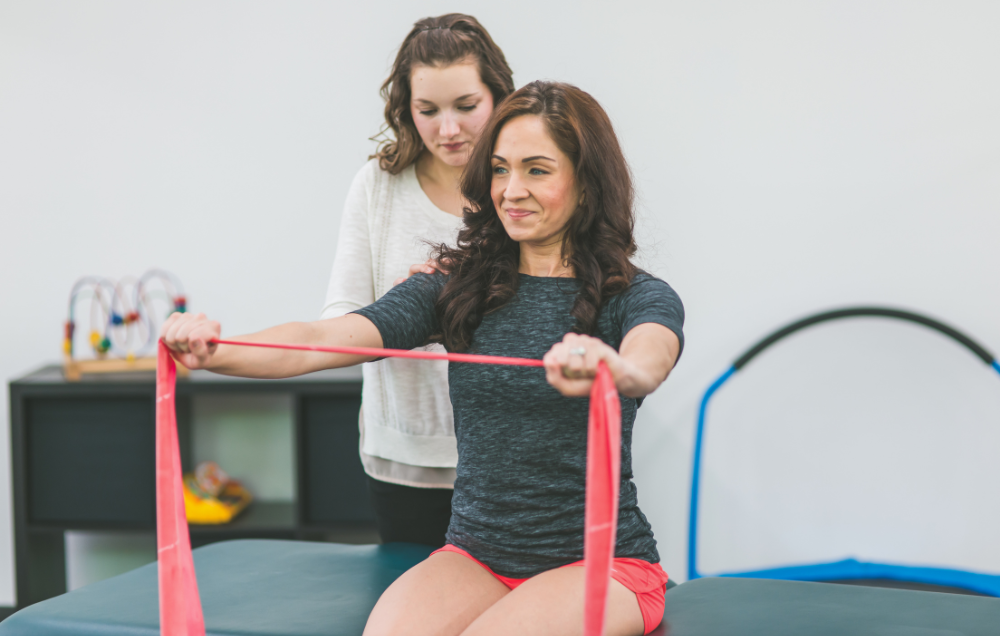Contents
The shoulder is a ball-and-socket joint that has the most extensive range of motion in the body. The shoulder is composed of the scapula (shoulder blade), clavicle (collarbone), humerus (upper arm), muscles, tendons and ligaments. The shoulder’s core group of muscles are known as the rotator cuff. Due to the complexity of the joint, there are a lot of parts working together in a limited area of space. Shoulder pain is a common orthopedic ailment. On average, anywhere from 18% to 25% of adults suffer from shoulder pain at any given time.
What causes shoulder pain?
When you’re experiencing shoulder pain, your quality of life can quickly deteriorate. It’s easy to take a pain-free life for granted. Your arms and shoulders allow you to do many things throughout the day from getting dressed, brushing your teeth, tying your shoes, to lifting overhead into cabinets. Shoulder pain may even affect your ability to drive or your sleep schedule. Experiencing pain when lifting your arm will have you wanting relief quickly.
Common causes of shoulder pain can include:
- Bursitis — Located in joints throughout the body are small fluid-filled sacs called bursae that help with lubrication and friction in joints. When excessive use or injury occurs, these bursae can become inflamed. This inflammation can be very painful and affect your daily activities.
- Tendinitis — Tendons connect muscles to bones. Overuse or degenerative wear and tear can cause inflammation of the tendons, leading to tendinitis. The most commonly affected tendons in the shoulder are the rotator cuff tendons.
- Tendon tears — Tendon tears can happen due to wear and tear over time or suddenly due to injury. Tears occur when the tendon partially or completely separates from the bone.
- Impingement — Shoulder pain from impingement occurs when the scapula (shoulder blade) puts pressure on underlying soft tissue when the arm is lifted.
- Dislocation — Dislocation can happen suddenly due to injury or over time from overuse. It occurs when the head of the humerus (upper arm) is forced out of the shoulder socket. Dislocation can be partial or complete. Once a dislocation occurs, it can happen repeatedly.
- Arthritis — The most common form of arthritis is osteoarthritis caused by wear and tear. Arthritis can cause tightening and stiffening in the joints, causing pain.
- Fracture — Shoulder fractures cause pain, swelling, and bruising in and around the shoulder. Older patients typically experience fractures due to falls, while younger patients experience fractures due to high-energy impacts such as motor vehicle accidents or contact sports injuries.
5 physical therapy exercises that can help your shoulder pain
Depending on what is causing your shoulder pain, you may be able to treat and relieve the pain through physical therapy, either in a clinic or doing exercises prescribed to you by your physical therapist at home. It is important to have any concerns checked out by a medical professional to rule out any serious medical issues. Your physical therapist may recommend taking an over-the-counter pain medication or using heat and cold therapy in addition to any gentle stretching exercises to help relieve your shoulder pain.
Your physical therapist will do an evaluation on your shoulder and come up with an individualized treatment plan. To best benefit your recovery, some physical therapy exercises for your shoulder pain could include:
- Lawn mower pull — Using a resistance band under the foot opposite of the injured shoulder (if the right shoulder is injured, place resistance band under left foot), keep the uninjured shoulder’s hand on your hip and bend slightly at the waist without locking your knees. Now as if you were starting a lawn mower, straighten upright, pulling your elbow across your body. Keep your shoulders relaxed and squeeze together your shoulder blades. Complete three sets of 10.
- Posterior stretching — Take your injured side’s elbow in the uninjured hand and use it to pull the injured shoulder’s arm up and across your body gently. Hold for 15 to 30 seconds; then lower your arm. Repeat several times.
- Crossover arm stretch — Stretch the injured side’s arm across your chest and reach as far as possible. Take the unaffected arm and place on your injured side’s elbow to help gently increase the stretch. Repeat this exercise with the uninjured arm.
- Reverse fly — Stand with your feet shoulder length apart and knees bent slightly. Bend forward at the waist while keeping your back straight. Using light weights in your hands, extend your arms and move them up and away from your body, being careful not to lock your elbows. Return to start and repeat. Complete three sets of 10.
- Up the back stretch — With your uninjured side’s hand, hold your injured side’s arm with palm outward behind your back by the wrist.
Lattimore PT can determine what’s causing your shoulder pain and how to best treat it
We are confident our Lattimore PT team can provide you with the best care to help you find relief from your shoulder pain. Our highly trained and expert physical therapists will walk you through a customized treatment of exercises for your shoulder, which can have you back to feeling yourself in no time.
Contact our team today for more information or to schedule an initial appointment.


